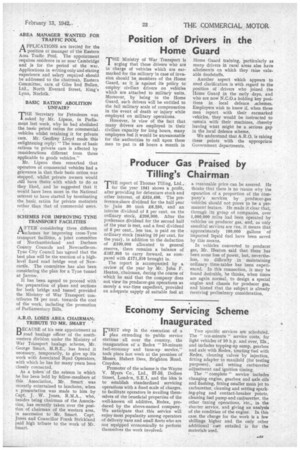Position of Drivers in the Home Guard
Page 23

If you've noticed an error in this article please click here to report it so we can fix it.
THE Ministry of War Transport is urging that those drivers who are in charge of vehicles which are earmarked for the military in case of invasion should be, members of the Home Guard, as it, is against its policy to employ civilian drivers on .vehicles which are attached to military units. Moreover, by being in the Home Guard, such drivers will be entitled to the full military scale of compensation in the event of death or injury while employed on military operations.
However, in view of the fact that many drivers are employed in their civilian capacity for long hours, many employers feel it would be unreasonable for the authorities to call upon these men to put in 48 hours a month in
Home Guard training, 'particularly as many drivers in rural areas also have allotments on which they raise valuable foodstuffs.
Another aspect which appears to need clarification is with regard to the position of drivers who joined the Home Guard in the early days, and who are now N.C.O.s holding key posie tions in local defence .schemes. Employers wish to know if, when these men report with their earmarked vehicles, they would be instructed to remain with their machines, -thereby leaving what might be a serious gap in the local defence scheme.
We understand that A.R.O. is raising these points with the appropriate Government departments.




















































